CAPITOL REEF (Day 23 - part 1)
I was on the road to Grand Wash at 6:45 am. It wasn't a long drive but most of it was unpaved, so it made going a bit slower. It was still mostly cool out, except in random patches of sun.


Setting out in the early hours

The trail was an easy 1.3 miles along dry stream bed. The canyon was filled with an eerie pinkish glow from the morning sunlight bouncing off the cliff walls. Skittish animals darted about... a jackrabbit here; a chipmunk there. The only sound was the firm breeze whistling among the rocks and rustling the leaves.

Light has yet to reach this far down in the canyon.

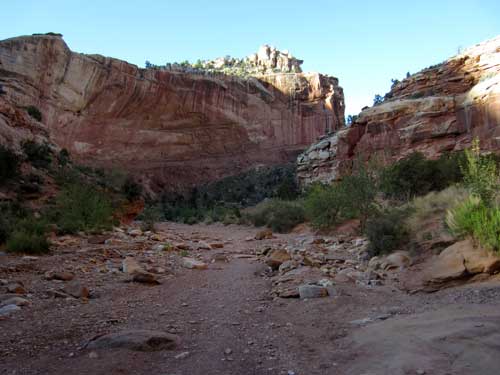



Approaching the part of the canyon known as the Narrows

Writing on the wall...

... possibly 1899?

This is unfortunately much more recent. But I suppose the question is, at what point does graffiti turn into history?

The Narrows
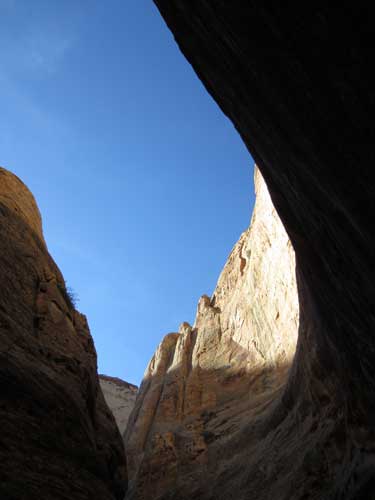

This is where a flash flood will get you!


Rock sculpted by water.

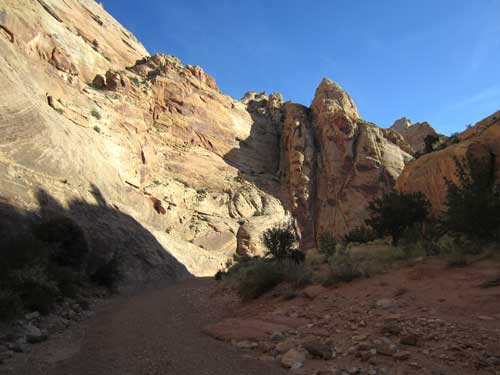
Back into the open
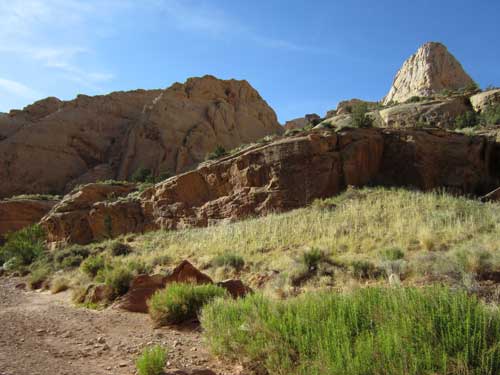


The Grand Wash... the end of the trail at Highway 24
By now the sun was higher in the sky, filling the canyon with light... and heat. I headed back.
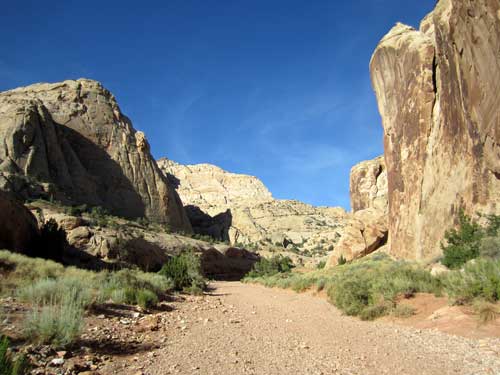

Off in the corner, I spotted more petryglyphs.




Note the distinctive chiseling technique...
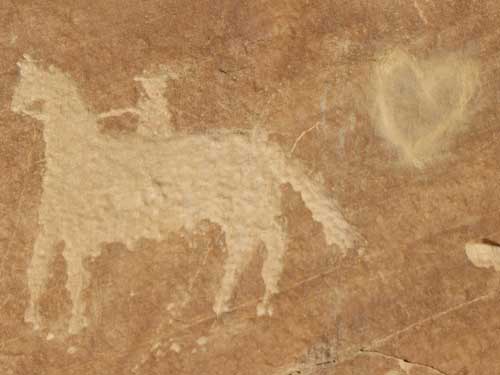
... and how the heart (which is clearly modern) is just scratched on.



Some non-damaging human interaction...

... and a wall of permanent scars,...

... some of which run quite deep.


The Violet-green Swallow catches insects in the air.

A hardy Singleleaf or Dwarf Ash


A vibrant, lush sunflower also looks out of place here.

Water-sculpted walls...

... with all kinds of textures!
Concretions are hard bodies that form in sediments before they become sedimentary rocks. They consists of the same material as the rock around them, plus some kind of cementing mineral. This cement often makes them harder and more resistant to weathering than the host rock. They can come in any shape and any size (from gravel to as large as a truck weighing several thousand pounds). They are often mistakenly called nodules, however a nodule is an irregular, bumpy lump composed of a different material (such as dissolved minerals that completely replaced the original sediment). Concretions are usually similar in color to the rock in which they are found, whereas nodules typically have a contrasting composition.

Reds, purples, blues, whites, pinks
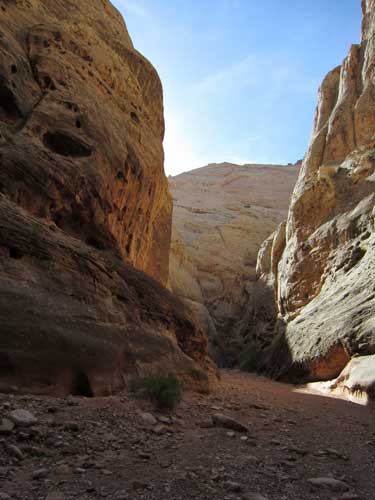
The start of the Narrows
return • continue

